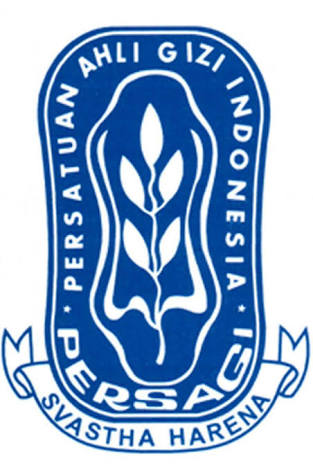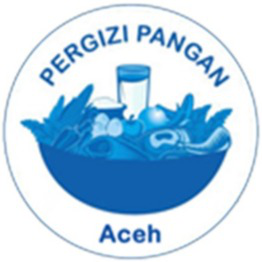Red vs. White Edible Bird’s Nests: Oxidative Processing Drives Nitrite Disparity and Food Safety Risks
Abstract
Full Text:
PDFReferences
Afani, S., Kurniawan, H., & Nugraha, F. (2024). Analisis Kandungan Nitrit pada Sarang Burung Walet (Edible-Nest Swiftlet) dari Kabupaten Sintang Menggunakan Metode Spektrofotometri Uv – Vis. Jurnal Pharmascience, 11(1), 169–179. https://doi.org/10.20527/jps.v11i1.17170
Aminullah, A., Puspa, N. K., & Nurlaela, R. S. (2023). Nitrite levels and sensory quality of the bowl type edible bird’s nest with different second washing times. Jurnal Pertanian, 14(2), Article 2. https://doi.org/10.30997/jp.v14i2.10398
AOAC. (1990). Official Methods of Analysis (15th ed., Vol. 1). AOAC Inc.
Bonifacie, A., Promeyrat, A., Nassy, G., Gatellier, P., Santé-Lhoutellier, V., & Théron, L. (2021). Chemical reactivity of nitrite and ascorbate in a cured and cooked meat model implication in nitrosation, nitrosylation and oxidation. Food Chemistry, 348, 129073. https://doi.org/10.1016/j.foodchem.2021.129073
Breider, F., Salihu, I., & Gunten, U. von. (2018). Formation of N-nitrosamines by micelle-catalysed nitrosation of aliphatic secondary amines. Environmental Science: Processes & Impacts, 20(10), 1479–1487. https://doi.org/10.1039/C8EM00335A
Chua, K. H., Mohamed, I. N., Mohd Yunus, M. H., Shafinaz Md Nor, N., Kamil, K., Ugusman, A., & Kumar, J. (2021). The Anti-Viral and Anti-Inflammatory Properties of Edible Bird’s Nest in Influenza and Coronavirus Infections: From Pre-Clinical to Potential Clinical Application. Frontiers in Pharmacology, 12. https://doi.org/10.3389/fphar.2021.633292
Cioc, R. C., Joyce, C., Mayr, M., & Bream, R. N. (2023). Formation of N-Nitrosamine Drug Substance Related Impurities in Medicines: A Regulatory Perspective on Risk Factors and Mitigation Strategies. Organic Process Research & Development, 27(10), 1736–1750. https://doi.org/10.1021/acs.oprd.3c00153
Gonta, M. V. (2020). The Study of N-Nitrosoamines Formation in Model and Real Gastric Juice Systems. In Handbook of Research on Emerging Developments and Environmental Impacts of Ecological Chemistry (the-study-of-n-nitrosoamines-formation-in-model-and-real-gastric-juice-systems; pp. 491–510). IGI Global Scientific Publishing. https://doi.org/10.4018/978-1-7998-1241-8.ch023
Green, L. C. (2023). N-Nitroso Compounds. In Patty’s Toxicology (pp. 1–11). John Wiley & Sons, Ltd. https://doi.org/10.1002/0471125474.tox055.pub3
Hudaya, R., Margana, D. B., & Martin, M. (2023). Kajian Penerapan Ruang Warna CIE pada Sistem Deteksi Kualitas Produk Sarang Burung Walet. JTERA (Jurnal Teknologi Rekayasa), 8(1), 49–56. https://doi.org/10.31544/jtera.v8.i1.2022.49-56
Ibrahim, R. M., Nasir, N. N. M., Bakar, M. Z. A., Mahmud, R., & Razak, N. A. A. (2021). The Authentication and Grading of Edible Bird’s Nest by Metabolite, Nutritional, and Mineral Profiling. Foods, 10(7), Article 7. https://doi.org/10.3390/foods10071574
Kumpook, S., Tipmongkolsilp, N., Kiatponglarp, W., Tanthanuch, W., & Pratumyot, K. (2023). Influence of level and oxidation state of iron on colors of edible bird’s nest. Radiation Physics and Chemistry, 208, 110921. https://doi.org/10.1016/j.radphyschem.2023.110921
Kusumawati, A., & Kurniawan, M. ’Ahdi. (2024). Analysis of Swallow Nest Nitrite Levels and Export Volume Projections: A Statistical Approach to Quality Improvement and Global Market Development. Media Kedokteran Hewan, 35(3), Article 3. https://doi.org/10.20473/mkh.v35i3.2024.243-255
Lestari, L. P., & Pratama, R. A. (2021). Analysis of Protein and Calcium Content in White Swallow’s Nest Stew (Collacalia Fuchiphaga): Procedia of Engineering and Life Science, 1(2), Article 2. https://doi.org/10.21070/pels.v1i2.1010
Niklas, A. A., Borge, G. I. A., Rødbotten, R., Berget, I., Müller, M. H. B., Herrmann, S. S., Granby, K., & Kirkhus, B. (2023). Levels of nitrate, nitrite and nitrosamines in model sausages during heat treatment and in vitro digestion – The impact of adding nitrite and spinach (Spinacia oleracea L.). Food Research International, 166, 112595. https://doi.org/10.1016/j.foodres.2023.112595
Ningrum, S., Palgunad, B. U., & Sasmita, R. (2022). Evaluation of Nitrite Concentration in Edible Bird’s Nest (White, Yellow, Orange, and Red Blood). Makara Journal of Science, 26(1). https://doi.org/10.7454/mss.v26i1.1311
Quek, M. C., Chin, N. L., Yusof, Y. A., Tan, S. W., & Law, C. L. (2015). Preliminary nitrite, nitrate and colour analysis of Malaysian edible bird’s nest. Information Processing in Agriculture, 2(1), 1–5. https://doi.org/10.1016/j.inpa.2014.12.002
Rahmawati, D., Purnomo, S. H., & Marwanti, S. (2022). Export performance of Indonesian Swallow’s Nest commodities in main destination countries. Scientific Horizons, 25(12), Article 12(25). https://doi.org/10.48077/scihor.25(12).2022.90-101
Ren, S., Hu, H., Zhu, X., Wang, S., Zhao, W., Xie, D., Xi, J., & Liu, K. (2024). Inhibitory effects and reactions of gallic acid, catechin, and procyanidin B2 with nitrosation under stomach simulating conditions. Food & Function, 15(6), 3130–3140. https://doi.org/10.1039/D3FO02877A
Robles, H. (2024). Nitrosamines. In P. Wexler (Ed.), Encyclopedia of Toxicology (Fourth Edition) (pp. 941–944). Academic Press. https://doi.org/10.1016/B978-0-12-824315-2.00155-X
Shi, J. (2022). Nitrite Toxicity: Chemical Analysis, Metabolism, and Health Effects. Highlights in Science, Engineering and Technology, 19, 210–215. https://doi.org/10.54097/hset.v19i.2852
Shim, E. K.-S., & Lee, S.-Y. (2018). Nitration of Tyrosine in the Mucin Glycoprotein of Edible Bird’s Nest Changes Its Color from White to Red. Journal of Agricultural and Food Chemistry, 66(22), 5654–5662. https://doi.org/10.1021/acs.jafc.8b01619
Thipwimonmas, Y., Jaidam, J., Samoson, K., Khunseeraksa, V., Phonchai, A., Thiangchanya, A., Chang, K. H., Abdullah, A. F. L., & Limbut, W. (2021). A Simple and Rapid Spectrophotometric Method for Nitrite Detection in Small Sample Volumes. Chemosensors, 9(7), Article 7. https://doi.org/10.3390/chemosensors9070161
Widiyani, P., Latif, H., Lukman, D. W., & Sudarwanto, M. B. (2021). Artikel Review: Bakteri Nitritasi Dan Peranannya Dalam Keberadaan Nitrit Pada Sarang Burung Walet. JURNAL KAJIAN VETERINER, 9(2), Article 2. https://doi.org/10.35508/jkv.v9i2.4731
Widyastuti, R., Sunu, R. T., & Gunawan, E. (2024). Strategi Peningkatan Daya Saing, Hilirisasi Produk dan Peluang Ekspor Sarang Burung Walet Di Indonesia. Jurnal Perencanaan Pembangunan Pertanian, 1(1), 49–63.
Xie, Y., Geng, Y., Yao, J., Ji, J., Chen, F., Xiao, J., Hu, X., & Ma, L. (2023). N-nitrosamines in processed meats: Exposure, formation and mitigation strategies. Journal of Agriculture and Food Research, 13, 100645. https://doi.org/10.1016/j.jafr.2023.100645
Yang, P., Dong, J., Wang, H., Zhang, T., Korshin, G. V., & Lu, J. (2024). Formation of N-Nitrosodimethylamine by Sunlight Irradiation of Dimethylamine Compounds in the Presence of Nitrite. ACS ES&T Water, 4(1), 208–216. https://doi.org/10.1021/acsestwater.3c00536
Yeo, B.-H., Rukayadi, Y., Wong, S.-F., Tan, C.-P., & Lai, O.-M. (2023). Physicochemical Properties of Raw Cleaned Edible Bird’s Nest After Different Primary Processing Including a New Cleaning Method. Sains Malaysiana, 52(12), 3421–3435. https://doi.org/10.17576/jsm-2023-5212-06
DOI: https://doi.org/10.35308/jns.v5i1.12201
Refbacks
- There are currently no refbacks.
Managed by Department of Nutrition, Faculty of Public Health
Published by Universitas Teuku Umar ,
Website: http://jurnal.utu.ac.id/JNS/index
Email: jns@utu.ac.id
Phone/Fax: +62-852-7736-5563; E-mail:
This work is licensed under a Creative Commons Attribution-ShareAlike 4.0 International License.














